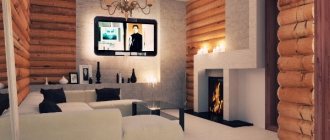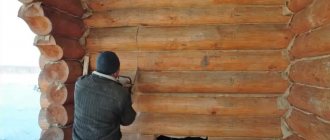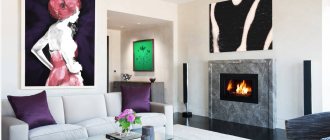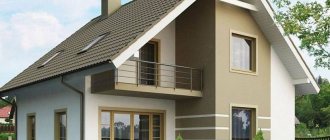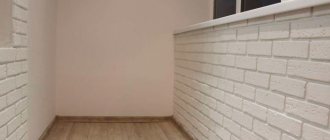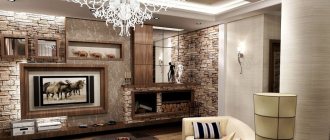Owners of finished residential buildings and those who are still planning the construction of their home have completely different fundamental requirements and conditions for choosing a fireplace and its location in the house.
Built-in fireplaces
The already completed layout, the materials from which the walls and ceilings are made, imply specific restrictions on the possibilities in choosing a place for installation. In a situation where the structure is still at the construction stage, you can install a fireplace that will not be limited in terms of the choice of its design.
Before developing a project for the fireplace itself, it is necessary to decide what main functions will be assigned to it. Based on this, it will become clear which design will be optimal and necessary.
Content:
- Types of fireplaces for a wooden house
- Basic rules for installing a fireplace
- Choosing a fireplace location
- Fireplace base structure
- Protective wall
- Chimney installation
- Design ideas
- Types of fireplaces by installation method
- Video on the topic of a fireplace in a wooden house
For many, a wooden house is a lifelong dream.
It is very good when this dream comes true, but in reality it is not the same as in the imagination. In order for a wooden house to be not only pleasing to the eye and comfortable to live in, it must also be safe. Fortunately, modern technology allows you to arrange your home in such a way that no electrical wiring will create a life-threatening situation. One of the most cozy details of a home is a fireplace in a wooden house.
It’s so nice after a hard day at work, in frosty weather, to come home and warm up by the fireplace. However, as in the case of wiring, you should protect the house and residents from fire. This article will discuss how to safely install a fireplace in a wooden house.
Types of tiled elements
Based on the type of front surface, terracotta and majolica products are distinguished. In the first case we are talking about unglazed tiles. Majolica elements are glazed, acquiring a special shine and color. Stove devices and fireplace portals decorated with porcelain tiles or earthenware products look especially elegant.
Based on the type and format of installation, the following types are distinguished:
- Basement;
- Shaped;
- Angular;
- Flat;
- Cornice.
Typically, finishing a stove or fireplace requires at least 2-3 different types of finishing materials. This way the corner elements allow you to fix the sharp edges of the fireplace. Shaped tiles are suitable for finishing smooth canvases. Using cornice elements, complex decorative elements of a stove or fireplace portal are formed.
Types of fireplaces for a wooden house
The fact that the house is built from logs will not be an obstacle to installing a fireplace in it. However, it is necessary to take into account all the requirements, since there are safety rules according to which the device must be installed. Manufacturers now produce products of different shapes and from different materials, so the complexity of installation will depend on these factors. And also on where you decide to install the device.
Typically, experts classify fireplaces for a wooden house according to the type of construction, the type of material from which they are installed, and also the type of fuel it requires.
Types by type of construction:
- Corner fireplaces - it’s already clear from the name that such structures are installed in the corner of the room. A corner fireplace in a wooden house looks quite stylish, but most importantly, it does not take up too much space.
- Direct wall device - they, in turn, are divided into those that are built into the wall and those that are mounted near the wall. The advantage of built-in products is that they are used not only as a beautiful decorative element, but can also heat two adjacent rooms.
- An isolated device looks quite interesting, as it can be of any shape, both round and rectangular. But what makes it exceptional is not its shape, but the fact that it can be installed even in the center of the room. The structure is always installed at a distance from the wall.
Types according to the material of manufacture
- Cast iron. Standard products whose fireboxes are designed to run on wood are usually made of metal, namely cast iron. These stoves are installed in stone, wooden, artificial stone, and brick fireplaces. In addition, chimneys are attached to them, and if we talk about a wooden house, then the installation of cast iron fireplaces must be done using a closed firebox. Glass or steel is used for this purpose.
- Brick. In a wooden house, a similar one is installed on a separate foundation. The structure consists of two parts - ordinary brick is used for masonry, at the request of the owner. But for finishing the firebox, only high-quality, refractory bricks are used. To design a chimney, you can choose two options - install a metal pipe or use brickwork.
- Biofireplace or electric fireplace. This device is always made of steel, as well as fire-resistant glass.
According to the type of fuel consumption
For a wooden type of housing, the design should be selected most carefully. Most products that consume fuel openly are prohibited. Nowadays, you can even find open-type stoves that consume alternative fuel that does not pose a danger to life. They can even be installed without using a chimney.
- Classic, solid fuel design. They are heated with coal or wood. It can be installed in a house from a log house, but only on a separate foundation and with the obligatory condition of insulating the surfaces and ceilings that will be adjacent to the fireplace.
- An electric fireplace is rightfully considered the safest, since the likelihood of a fire due to this device is very low. Instead of using fire to heat the room, it uses electricity to warm the room. To make everything look as if it was a real fireplace with fire, manufacturers installed special lighting that imitates flames. The advantage of this type is that for their installation there is no need to build a separate foundation and chimney. It can be located on the second floor, the main thing is that the wiring is insensitive to voltage changes and is reliably insulated.
- Biofireplace is a fairly new type, they have only recently begun to be installed. Ideal for wooden houses, as it operates using a substance - ethanol. Inside the stove there is a special container for filling with ethanol, as well as a ceramic combustion system. The advantages of this type are that there is no ash, soot, or other sediment, and the fireplace does not produce emissions of harmful substances. The only negative is that it does not heat at all, it only performs a decorative function. They can be mounted on a wall, they can be suspended, floor-mounted or even table-mounted. It is not necessary to install a chimney.
- Gas - the inside is not ceramic, as in biofireplaces, but a gas combustion system. Natural gas is used as fuel and is installed in the same way as a classic one, including the chimney.
Functions performed by the fireplace
There are four main functions that a fireplace can perform in a home.
- Aesthetics
The main purpose is the opportunity to admire live fire.
Live fire in the house
Traditionally, a fireplace in a home is located in such a way that it is visible from anywhere in the room. Often, fireboxes are equipped with glass doors, which ensures the safety and efficiency of the entire structure. However, it is possible that the firebox does not have doors, then it is necessary to purchase a fireplace screen as an addition and protective accessory. Otherwise, people sitting near the fire may be disturbed by hot sparks flying from the firebox.
- Heating
Different models of fireplaces are characterized by different efficiency factors - this is important.
It is uncharacteristic for a house outside the city to install decorative electric or bio-fireplaces, since their power is no more than 2 - 2.5 kW. Traditionally, owners choose full-fledged fireplaces that operate on gas or solid fuel with an open flame.
Air heating of the house with a fireplace
If you plan to use a fireplace structure to heat your home, then you need to pay close attention to the design of the firebox. A fireplace made of brick with an open firebox can heat only one room. This is provided that a sufficient amount of fuel is spent, since the efficiency of such a model is no more than 20%.
A closed firebox with additional heating functions is characterized by an efficiency of 85%. Such fireplace structures are used to heat from one to three adjacent rooms, provided that they are located in the corner. There are models of fireplaces with a water circuit that can heat an entire floor.
- Cook at home
Shish kebab in the fireplace
A live fire in the fireplace provides the opportunity to cook food. Most models are equipped with special barbecue sticks, sections designed to hold skewers, a grill, and there are also full ovens.
- Decoration
The fireplace can be used as a dominant element in the interior design of the entire room. Almost all home models cope wonderfully with decorative functions in the interior. There are no limits to your imagination - you can decorate the mantelpiece or complement the entire fireplace structure with exquisite accessories.
Beautiful wood fireplace trim
Traditionally, a fireplace in a home is used as additional or backup heating. In practice, it is not often used as the main heating method. Often, boilers are used to heat a house, and fireplace structures serve a more decorative function. In most cases, this is rational when the residential building is large enough. However, for dwellings that are not very large, it is quite possible to use a wood-burning stove.
Nowadays, manufacturers put a lot of effort into developing design designs, so you can always choose a fireplace for your home, which can be decorated in a wide variety of styles - from classic to ultra-modern design.
Basic rules for installing a fireplace
Before you even decide where to install and which fireplace to choose, you should find out what installation rules and regulations exist. This is especially important if you have to install a fireplace in a wooden house with your own hands. Only after you have studied them, you need to weigh the pros and cons so that it is an informed decision.
Basic ten rules that must be followed before installing a stove with a fireplace:
- The device can only be installed if twelve months have passed since the construction of the house - and this is the minimum period.
- It is better if thirty-eight months pass from the date of completion of construction. This recommendation is due to the fact that during this period the wooden building will stabilize, and the shrinkage of the house will also be completed.
- Open fireboxes are installed only on the lower floors!
- Never decide to install a fireplace on a wooden floor.
- The foundation for the stove is poured separately from the main foundation (with the exception of electric ones).
- Be sure to calculate the layout for the construction of a chimney (with the exception of electric and bio-fireplaces).
- All wooden parts that are located in the immediate vicinity of the stove must be reliably insulated from heat and sparks from the flame.
- Under no circumstances should you install a fireplace near a window if you plan to decorate it with curtains or curtains. Also, do not place fabric items, such as a soft rug, on the floor near the fireplace. Also, do not place furniture near it.
- Equip the stove with a screen that can be removed.
- When you build a fireplace, be sure to keep a fire extinguisher nearby.
If you know that you cannot meet these requirements, install an electric fireplace, or bio-fireplace.
Attributes of the style “a la russe”
Probably, every Russian person lives in nostalgia for the estates of the centuries before last, whose inhabitants celebrated Maslenitsa magnificently, went hunting almost every week and periodically held balls. The atmosphere of village huts with their red corners, snow-white stoves and grips does not remain forgotten. The estate glorified by Bunin, where Antonovka is poured in the garden and a samovar smokes on the veranda, is an independent spiritual image that accompanies the Russian person throughout his life. Just like the village hut, which Nekrasov and Yesenin colorfully described, serves as a bridge connecting us with the history and culture of ancient Rus' and imperial Russia.
White tiled stove in the interior of a wooden house in the Russian style
Russian style in interior design borrows techniques and principles of decoration from ancient estates and huts in central Russia. It is generally accepted that it is precisely such symbols of our country as the matryoshka doll, the bear and the balalaika that help give the room an “a la russe” direction. In fact, a Russian-style home is not always about towels with roosters hanging everywhere and samovars accompanied by sugar loaves. Khokhloma-painted nesting dolls, Tula gingerbread cookies and brown bear skins, which can turn any home into a museum, can usually be successfully avoided in “a la Russe” interiors.
But what it’s hard to imagine a Russian-style house without is a tiled stove.
Choosing a fireplace location
If you are sure that you can fulfill all of the above requirements, then you should think about choosing a place. Do not install near windows with curtains. Also, when planning the location, keep in mind that the device cannot be placed in line with the door and window openings.
When choosing a room, pay attention to the fact that experts recommend installing a standard stove only in a room with an area of at least twenty square meters.
The rest depends on the choice of fireplace - corner, which means in the corner, and you have the chance to place an insulated fireplace in the center of the room.
How to make a wise choice?
First you need to decide on the type of fuel that will be used. In addition to the well-known wood burning fireboxes that operate on wood, there are models that operate on gas or electricity.
Natural gas consumption when heating with a gas fireplace
Different materials are used to make fireplaces - cast iron, steel, stone or brick. The material greatly affects not only the overall efficiency of the fireplace, but also its appearance.
The choice depends on:
- layout and area of the house;
- possibilities and desires of the owner.
The optimal solution for a country home is a corner stove-fireplace made of cast iron with a closed firebox.
There are several fundamental aspects that will further influence the comfort of use.
Fireplace base structure
The main condition for the base is heat-resistant qualities. Also, in the place where the fireplace will be located, the floor covering is removed, then a concrete screed is poured. If you plan to place the fireplace against a wall, be sure to decorate the wall with a material that does not burn.
If a fireplace is installed in a wooden house, for example, a fireplace in a country house, then it is better if the foundation of the house is a monolithic slab. All these conditions may not be met when installing electric and bio-stoves.
The Great History of the Russian Hearth
The Russian stove has always been universal. For our great-grandfathers, it served as a hearth, a heating device, a stove, a bedroom, and simply an integral decor in the house.
The earliest types of stoves were decorated with terracotta tiles. Then the heating systems were decorated with self-supporting tiles, which gave rise to the term “tile stove”, where the original elements were the main construction and finishing material.
The 17th century is the heyday of tiled stove art in the Russian state. The Moscow Kremlin, the Trinity-Sergius Lavra, many monasteries and churches became centers where glazed tiles decorated all available space.
In the 18th century, Peter I officially banned the construction of “black” stoves, inducing Russian people to build fireproof heating structures. The ruler, who was especially drawn to European culture, launched the production of “Dutch” tiles with a snow-white tiled finish and cobalt painting.
Technological progress has driven stoves out of homes. Tiled stoves and fireplaces have only begun to gain popularity in the last few years. They are not so loaded in terms of functionality, but as a decorative element they look simply amazing.
Protective wall
A living room in a wooden house with a fireplace looks very beautiful, but a burnt wall will look very ugly. To avoid this, you should protect wooden walls from fire.
The wall behind the fireplace can be finished with the following materials:
- Basalt wool.
- Mineral sheet heater that reflects heat.
- Non-flammable roll heater.
- Brick (you can partially cover the wall behind the stove).
Chimney installation
There are two methods for installing a chimney in a wooden house:
- With an outlet to the roof inside - for this, an opening is built in the ceiling so that there is up to fifteen centimeters of space from the ceiling to the edge of the chimney. The chimney is built from two pipes of different diameters and insulated with fireproof material.
- With an outlet from the hearth to the outside - install a chimney pipe with an indentation from the outer wall and seal the entire chimney.
Design ideas
If you have a veranda, then a fireplace trimmed with natural or artificial stone will look very beautiful.
Often the stove is made the central element of the interior in the living room or bedroom. It can also be decorated with beautiful natural or artificial stone.
You can even install a special place nearby for storing firewood - a firewood shed. However, make sure that your firebox is closed so that no sparks enter the firebox.
Types of fireplaces by installation method
There is another classification of stoves according to the place where they are installed, namely:
Wall-mounted fireplace - this option is installed both after the construction of the house is completed and during it. The chimney is attached to a wall that will not catch fire - in a house made of log wood, the wall will have to be finished with fire-resistant material. The structure itself can be finished with stone, brick or even ceramic tiles. Its disadvantage is that it is too large and suitable only for large rooms.
Built-in fireplace - it can only be built during the construction of the house, namely, at the time of erection of the walls. This occurs due to the fact that some parts of the stove, including the chimney, are built into the wall. If you want to install such a fireplace after construction is completed, you will have to cut out a niche for this. It can be mounted in a corner or against a wall.
A free-standing fireplace - the design looks incredibly beautiful and stylish, but, unfortunately, is only suitable for large rooms. In appearance, it resembles a structure that hangs over the floor, is built only in the center of the room, and can be built both as a closed and as an open area.
Before deciding which fireplace you will install in your home, read the installation rules. If you know that you cannot adhere to all of them, then it is better to give preference to an electric stove or even a bio-fireplace.
If you can build a standard fireplace in your wooden house, then do not skimp on materials designed to protect the walls, floor and ceiling from fire, since your lives depend on it.
Advantages of tiles for stoves and fireplaces
Ceramic tiles for facing fireplaces have the following positive characteristics, including:
- High degree of strength and rigidity. It is the thickness of the tile that plays a significant role here; it is 2 times greater than the thickness of ordinary ceramic tiles.
- Resistant to any temperature.
- The ability to “painlessly” respond to any temperature changes.
- Keeps you warm throughout the day.
- No harmful substances. The tiles are absolutely environmentally friendly; during operation and when heated, the baked clay does not emit substances hazardous to human health, and dust does not accumulate on it.
- Does not cause difficulties during care. Just wipe the tiles with a damp cloth and they will shine like new again.
- Economical fuel consumption. Thanks to their box-shaped shape, tiles retain heat for a long time, which reduces fuel consumption. The pump increases the duration of the heating period.
- Low probability of getting burns upon contact with the surface of the fireplace or stove. This is explained by the presence of an internal chamber in the tiles; the outer walls do not have a high temperature.
- Low degree of moisture absorption.
- The heat coming from a fireplace is very similar to that coming from the sun.
- Long service life of the tile.
- Never loses its relevance.
- Beautiful and interesting appearance of finishing material made of refractory clay, to which pure quartz sand has been added.
- Suitable for any style in the room. It is especially effective and advisable to use a fireplace with tiles in country, wooden houses.
Finishing has many advantages, it is devoid of disadvantages


